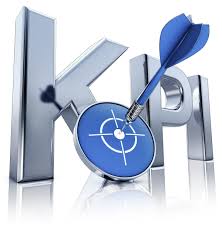
“Intelligence is the ability to adapt to change.” – Stephen Hawking
Whether you’re a small or large business, there are certain critical performance metrics that allow managers and executives to manage and achieve results. And in order to navigate the complex waters of government contracting in particular, keeping your fingers on the pulse of your business is essential. Using an enterprise resource planning system will allow your business to capture vast amounts of data. But the challenge is to focus in on the KPIs that really matter.
Today we focus in on 7 important KPI’s for government contractors. Tracking the right Key Performance Indicators will help you to be more proactive, help you select the right projects, calculate more accurate bids, and ultimately lead to better profit margins.
-
Backlog
- Precisely determine remaining funds on existing contracts, and how many option years remain. And knowing exactly when the critical percentage of funds has been reached on each contract is essential.
-
Wrap Rate
- Wrap rates are those costs that go into the final price you charge the Government for your services or products. Government contracting is extremely competitive, especially in today’s Lowest Price Technically Acceptable (LPTA) environment. This means you need to accurately assess what you can and can’t do, and at what price.
-
Labor Utilization
- Tracking the percentage of time your employees spend on direct (billable) work vs. indirect (non-billable) work in real time and following trends allow for more effective adjustments to meet target billable utilization.
-
Accounts Receivable Aging
- Tracking aged accounts receivables won’t necessarily help you get paid faster, but it may give you insight on your customers (agencies) and allow you to prepare for certain trends.
-
Profit and Loss by Project
- It’ not only important to understand that certain projects are performing adequately, but the details of why they are over/underperforming on a real time basis will allow you to adjust on the fly and maximize profits.
-
Budget vs. Actuals on each Project
- Each project manager should be able to clearly track budgets vs. actuals on the projects they oversee, and capture work progress assessments against the baseline plan. In addition, provide valid, timely, and auditable information for proactive project management analysis and action.
-
New Business Pipeline
- It’s easy to track the business you already have, but what about potential future sales coming down the pipeline? An integrated CRM system can help you look at both existing and future business data together on one screen. In addition, you can look at the number of opportunities pending and the probability of winning the business, the cost of preparing your proposals, your success rates on specific types of contracts or with specific agencies, and even potentially uncovering new areas for growth.
With the right ERP system, you can get all of these KPIs in one central source of truth. An application like JAMIS Prime ERP can do just that and more. For more information, contact us at info@jamis.com, or you can request a demo of the system HERE.
